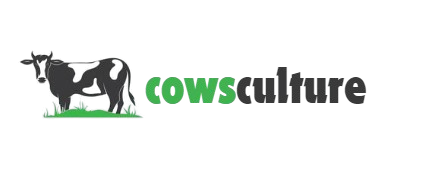Highland cattle, with their distinctive long horns and shaggy coats, are a breed known for their hardiness and ability to thrive in various environments. When considering raising Highland cows, one of the primary concerns is how much land is needed to support them adequately. This article explores the factors affecting land requirements and provides guidelines for prospective Highland cattle owners.
Factors Influencing Land Requirements
- Grazing Needs: Highland cows are grazing animals, primarily relying on pasture for their nutritional needs. The quality and availability of pasture significantly influence the amount of land required. High-quality, well-managed pasture can support more cattle per acre compared to poorer quality land.
- Climate and Geography: The climate and geographic location of the farm play a crucial role. In regions with abundant rainfall and lush grass growth, less land may be needed. Conversely, in arid or semi-arid regions, more land is necessary to provide adequate forage.
- Soil Quality: Fertile soil that supports rich grass growth can sustain more cattle per acre. Soil health, including nutrient content and drainage, impacts the productivity of the pasture.
- Management Practices: Effective pasture management, including rotational grazing, can optimize land use. Rotational grazing allows pastures to recover and regrow, ensuring a continuous supply of forage.
General Guidelines for Land Requirements
While specific needs can vary, a general rule of thumb is to allocate 1.5 to 2 acres of good-quality pasture per Highland cow. This estimate can fluctuate based on the aforementioned factors.
- High-Quality Pasture: In areas with fertile soil and ample rainfall, 1.5 acres per cow may suffice. Properly managed pastures in these regions can provide abundant forage throughout the growing season.
- Moderate-Quality Pasture: In regions with moderate soil fertility and less predictable rainfall, 2 acres per cow is a more realistic estimate. This additional land helps ensure that the cows have enough forage, especially during dry spells.
- Poor-Quality Pasture: In areas with poor soil quality or limited rainfall, more than 2 acres per cow may be necessary. In such conditions, supplemental feeding may also be required, especially during winter or drought periods.

Additional Considerations
- Winter Feeding: In many regions, pastures do not provide adequate forage year-round. Highland cows may require supplemental feeding during winter months. Ensuring enough land to store and produce hay is crucial.
- Water Supply: Reliable access to clean water is essential. Ponds, streams, or well-maintained water troughs should be available on the land.
- Shelter and Shade: Highland cows are hardy, but providing shelter from extreme weather and shade during hot months is important for their well-being.
- Herd Size and Expansion: When planning land requirements, consider future herd expansion. Starting with a smaller number of cows and gradually increasing the herd size allows for better management and adaptation.
Conclusion
Determining the right amount of land for Highland cattle depends on various factors, including pasture quality, climate, soil fertility, and management practices. As a general guideline, allocating 1.5 to 2 acres of good-quality pasture per cow is a reasonable starting point. Prospective cattle owners should assess their specific conditions and plan accordingly to ensure the health and productivity of their Highland cows. Proper land management and care can lead to a sustainable and rewarding experience in raising these iconic cattle.
FAQs
1. How many acres does a single Highland cow need?
- Generally, 1.5 to 2 acres of good-quality pasture are needed per Highland cow. The exact amount depends on pasture quality, climate, and management practices.
2. Can Highland cows thrive on poor-quality land?
- Highland cows are hardy and can adapt to poorer quality land, but they may require more acreage and supplemental feeding to meet their nutritional needs.
3. How does rotational grazing impact land requirements?
- Rotational grazing can improve pasture quality and efficiency, potentially reducing the overall land needed. It allows pastures to recover and maintain productivity.
4. What kind of supplemental feeding might be necessary?
- Supplemental feeding, especially during winter or drought, may include hay, silage, or grain to ensure the cows receive adequate nutrition.
5. How does climate affect land requirements for Highland cows?
- In regions with abundant rainfall and lush pastures, less land may be needed. In arid or semi-arid regions, more land is typically required to provide enough forage.
6. What type of shelter do Highland cows need?
- While Highland cows are hardy, they benefit from shelters to protect them from extreme weather conditions and provide shade during hot months.
7. How important is water availability for Highland cows?
- Access to clean and reliable water sources is crucial for Highland cows. This can be from natural sources like ponds and streams or well-maintained water troughs.
8. How can soil quality impact the amount of land needed?
- Fertile soil that supports rich grass growth can sustain more cattle per acre. Poorer soil quality may require more land to produce the same amount of forage.
9. Should I consider future herd expansion when planning land requirements?
- Yes, it’s wise to plan for future herd expansion. Starting with a smaller number of cows and gradually increasing allows for better management and adaptation.
10. Can Highland cows be raised on hilly or rough terrain?
- Highland cows are well-suited for hilly or rough terrain due to their hardiness and agility. However, this may still affect the overall land required for adequate grazing.
11. How do seasonal changes affect land needs?
- Seasonal changes can impact pasture availability. During winter or dry seasons, more land or supplemental feeding may be required to ensure adequate nutrition for the cows.
12. Is it necessary to fence the land for Highland cows?
- Yes, proper fencing is important to contain the cows and protect them from predators. Electric fencing or sturdy physical barriers are commonly used.
These FAQs provide a quick reference to help you understand and plan for the land requirements of Highland cows, ensuring their health and productivity in your farming setup.



